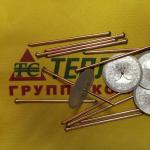
Currency arbitration concept Types of equipment implementation. Arbitration operations in the foreign exchange market. Types of arbitration and their features
Spatial or intermal currency arbitration (transaction and counterfeiting are carried out in different exchange markets, for example, buying in Tokyo, and the sale in London, the profit is obtained by random divergence in currency courses on different markets). This is a classic arbitration, its main distinguishing feature is that it is almost risk, since the currency position opens in minutes. Intermal currency arbitration plays an important role in the functioning of foreign exchange markets, since as a result of these operations, currency exchange rates are aligned in different markets; temporary currency arbitration (profits get on the difference in currency courses at different periods of time); conversion arbitration (profit from random discrepancy in quotes of different currencies from different participants in the foreign exchange market); Currency percentage arbitration (profit due to the difference in interest rates on deposits in different currencies; consists in buying a currency with a high interest rate, placement on a deposit and follow-up to this currency for the initial in order to implement arbitration profits). There are a simple currency arbitration, in which two currencies are involved in transactions, and complex currency arbitration, when more than two currencies are involved (for example, conversion arbitration). Currency arbitration operations underlie the currency diling of commercial banks. Swip operations - a special group of operations that recently obtained increasingly distribution. There are currency, percentage and currency percentage swaps. In the most general features Any swap - replacement of cash flow with one characteristics on cash flow with other characteristics. Cash flow characteristics: payment currency and currency exchange rate; a type interest rates; interest rates; frequency of payments. The main goal of conducting swap operations is the optimization of cash flows to reduce the costs of attracting resources and carry out operations, as well as insurance of interest and currency risks, although they can be carried out in arbitration (speculative) purposes. Often these tasks are solved on the market interconnected. Interestrial swap is the exchange of interest payments calculated with the agreed (estimated, nominal) amount for a certain period of time, for example, for three years. The exchange can participate both two sides (simple swaps) and several sides (complex, or structured swap). Participants in operations swap can be both two or more banks and non-bank organizations. Usually, at the percentage swap, one side (bank) assumes the obligation to pay the other party (another bank or company) payments at a fixed interest rate on a significant nominal sum in exchange for interest payments at a floating interest rate on the same amount Torus undertakes to pay the opposite side of the swap. At the same time, the nominal amount from which interest payments consider is only the base for calculating the amount of payments, is taken into account as such for the balance and payment, as a rule, is not subject to. In fig. 3 is an example of using percentage swap For insurance of interest risk of bank. The bank's assets are placed with a fixed weighted average yield of 9% per annum, while its obligations are revalued in a six-month time interval at the average rate LIBER plus a spread of 2% per annum (LIBER + 2%). With such a balance structure, the Bank may incur losses with an increase in market interest rate, since this may lead to the increase in the cost of the bank's resources at a fixed return on assets. To insure from possible losses, the bank concludes a percentage swap for three years, making the obligation to pay interest payments at a fixed interest rate of 8% per annum in exchange for payments at the floating rate LIBER plus 2% per annum. Thus, the Bank recorded a percentage margin in 1% for itself, and the rise in price of resources with an increase in interest rate will be compensated by the increasing payments of the SVP partner. Fig. 3. Insurance of interest risk With the help of the percentage swap, currency swap is a combination of two currency transactions, spot and forwards concluded at the same time for the same amount, but with the opposite direction (transaction and counterfeit). Cash transaction (SPOT) provides immediate translation of resources from one currency to another, an urgent transaction provides reconversion (reverse translation of resources in the initial currency). For currency swaps, it is characteristic that the course and cash, and the urgent transaction is determined simultaneously at the time of the conclusion of the transaction swap. As a result, the parties are at the disposal of the necessary currency for a certain period, they are protected from currency risk during reconversion (swap forms a closed currency position) and save on operating expenses. At the same time, the operation of the operation of Swap, as a rule, more than a year, that is, it is a way of insurance of long-term currency risks. This is different from dealership swaps, with the help of which short-term currency risks are insured on the inner interbank foreign exchange market. In the global capital market, swap operations are possible for any period of 15 years. This market is based at the Institute of Swap Mediators, the role of which international banks and credit and financial institutions play. To reduce numerous risks with which these complex individual contracts are associated, the use of typical fundamental agreements (ISDA Master Agreement) is practiced, which are adapted to the specific needs of the parties. Depending on whether the cash transaction is a purchase or sale, distinguish operations depart and report. DEPORT Cash urgent (bought / sold) Purchase sale Report Cash + urgent (sold / bought) Sale Purchase Currency swaps are with different exchange rates and with the same course for conversion and reconversion. Currency percentage swap is a combination of currency swap (exchange of agreed amounts of different currencies with subsequent reconvertation at a predetermined course) and the percentage swap (exchange of regular interest payments in the corresponding currencies between the beginning and end of the swap). Appendix 2 presents an example of using currency and percentage systems in order to insure currency and percentage risks of the Bank. In modern conditions, the continued complication of financial schemes for contracts and the emergence of various financial innovations there are opportunities for constructing and other variants of swap operations in various markets, including credit and stock. In operations, Swap Banks can participate both as direct participants (sides of the swap) and as intermediaries developing conditions for swaps that organize these operations and guaranteeing the receipt of appropriate payments (guarantions banks). The last group of currency operations of commercial banks - international settlements in foreign currencies is considered in detail in the next chapter. *** Job commercial Bank In the foreign exchange market, it should be aimed at achieving the optimal relationship of such basic parameters of its activities, as liquidity, riskiness and profitability. Only subject to this condition currency operations Commercial banks give them the opportunity to widely maneuver the available resources, maintain sustainability and competitiveness, expand the nomenclature banking products and services. Questions for fixing the material: 1. When complying with what conditions can banks and their customers can carry out currency transactions? 2. In connection with which the currency date is applied? 3. Why should banks need to control the size of their open currency positions? 4. What is "urgent currency transactions"And what are they needed for? 5. What is the feature of swap operations and why did they get such widespread in the market? Terms of currency position is the ratio of assets and requirements of the Bank in foreign currency and its liabilities and liabilities in this currency. Currency arbitration - The opening of short-term currency positions in order to profit on the difference in currency courses in different markets. Currency rate - the price of one currency unit, expressed in a certain number of other currency. Currency risk is the probability of incurring damages or excessive expenses due to an unforeseen and unfavorable change in the currency exchange rate in which the position is open. Conversion operations are transactions for the exchange of agreed amounts. monetary units One country on the currency of another country at the agreed course and for a specific date. The option is an urgent transaction, providing for the right to choose an option buyer: to execute or not execute a deal on agreed conditions, while the seller of the option is obliged to fulfill it if the buyer will require. For this choice of choice (option), the option buyer pays the seller a prize. Option "Call", or an option for the purchase of currency (Option Call) - this is a contract providing on the one hand, the right buyer's right to buy a currency fixed course In the future, in exchange for a prize, and on the other hand, the obligation of the option seller to sell the option of the option of an alignment of a certain currency. Option "Put", or an option for selling currency (Option Put) is a contract providing on the one hand, the right buyer's right to sell a currency at a fixed rate in the future in exchange for a premium, and on the other hand, the owing seller's obligation to buy from the buyer The option is a coherent amount of a specific currency. Swap - a group of operations representing the exchange of counter cash flows between counterparties in order to optimize cash flows, reduce costs for raising resources, as well as interest and currency risks. Forward is a solid (i.e. mandatory for execution) an over-the-counter transaction, which is usually as a rule, in order to implement a real sale or purchase of an appropriate currency with the delivery within the agreed period in the future. Futures - Exchange Transaction, containing an obligation to deliver or accept financial assets (currency, securities, etc.) in a specified amount at a certain point in the future, at a price set at the time of the contract.Today, these main types of currency arbitration are allocated:
- - This is a spatial,
- - as well as temporary, in turn divided into simple and complex (indirect).
With a simple currency arbitration, the actions are produced with two currencies under conditions of urgent and cash transactions, and with a complex with three or more. In case of complex arbitration, the manels are as if rising in steps, exchanging bought currency units by third, fourth, etc. At the same time, at the final stage, the return to the initial type of currency is not a prerequisite.
Complex currency arbitration can be implemented in the situation when the cross-course calculated between two different currencies will differ from the actual course on any of the markets or in any of the banks.
As the global and monetary system, the forms and varieties of currency arbitration have also changed. In the time of the "Gold Standard", currency arbitration was practiced, which was based on the course difference of gold, bills, currencies, as well as all sorts of credit payments. But then the golden arbitration has lost its meaning, because Golden Standard has been canceled, and the spatial continued to actively apply, because With insufficiently reliable and fast communication between the currency markets, the difference in the dynamics of the currency exchange rate remained. Unlike temporary arbitration, a closed position of the currencies is created with spatial, because At the diverse markets at the same time, it is carried out both selling and purchase, so there is no large currency risk.
Under modern conditions for the development of electronic means of information and communication, as well as in connection with the expansion of the volume and number of currency transactions, the differences in courses on separately taken markets, the currencies began to appear much less often, for this reason the spatial arbitrage has lost its importance and gave way to temporary.
Varieties and types of currency arbitration depending on the purpose and technique of implementation
Monetary The arbitration among other things differs for its purpose, it is:
- § speculative appearance of arbitration
- § and conversion.
With speculative currency arbitration, the goal of extracting benefits (profit) from due to their oscillations is prosecuted. Note that in this case, the final and source currency must coincide, in other words, the transaction passes, for example, according to such a scheme: EUR / USD; USD / EUR.
The conversion type of currency arbitration, pursues the goal of the most profitable acquisition of the required currency. In other words, conversion currency arbitration is the use of competitive quotes of different banking institutions or on one, or in several currency markets. The possibilities of this type of arbitration is wider, because The term difference here is not as large in comparison with speculative arbitration, where it not only should be covered with margins between the courses of sellers and buyers, but also bring revenues.
Under modern conditions, currency exchange rates in different markets selling currencies, very rarely have deviations by value, which is equal to either exceeding the exchange rate difference between selling and buying, which makes it possible to apply only the conversion type of arbitration in practice, i.e. Banks acquire the currency they need, on those currency markets where they are cheaper.
Thanks to modern means of information, you can easily track all changes in foreign currency quotations on all leading currency markets. At the same time, overhead costs for the means of communication were significantly reduced and in the conditions of the increased minimum transaction (MIN $ 5 million and the United States and even more) are no longer so significant as before.
The technique of currency arbitration also has its own varieties.
The technique of implementing currency arbitration is divided into next species:
Interest arbitration. This species implies the aspiration of capital in those states where interest rates are high enough. This species Arbitration is closely related to the operations carried out in the loan capital market, and also provides for a loan in the markets of other countries, where interest rates are lower.
Also percentage arbitration, provides for the placement of equivalent of borrowed currencies and national capital markets, on which interest rates are higher. Note that at the same time banks may conclude loan currency sales agreements for a certain period in order to protect themselves from currency risks;
- - leveling arbitration. This species implies the application to produce pricing price differentiation. Such currency arbitration can be as direct, i.e. Use the course difference between the currency of creditors and debtors and indirectly, i.e. with the participation of a third currency purchased at the minimum course and then sold then instead of payments; - Differentiated arbitration. This type of arbitration involves the use of price differentiation in various markets. In this case, currency risk and open positions No missing. Unlike those who speculate, the arbitrations risk much less, as a rule, they open opposite positions in one currency both on one and immediately in several foreign exchange markets that are interconnected by this very reducing currency exchange rate risks;
- - Currency percentage arbitration is a kind of simple percentage arbitration and is based on the use of interest rates on the use of interest rates on those operations that are manufactured in different time parameters. This type of arbitration may be temporary, i.e. Use for a certain time covered (forward coating) and uncoated, in other words without forward coating.
In conclusion, we note that arbitration operations for the entire finance market are quite important. For the reason that arbitration transactions They are based on the receipt of profits from the differences that exist both within the same market and between different markets, arbitrator intervention makes it possible to regulate the market and ensure the relationship between exchange rates.
Currency arbitration - A special type of currency transactions, the main goal of which is to make the profit and avoidance of possible foreign currency losses by using a favorable conjuncture of foreign exchange markets.
Currency arbitration becomes possible by the presence of a difference in quotations in international and national currency markets.
The main principle of currency arbitration is to buy a currency cheaper and sell more expensive.
Classification of types of currency arbitration can be carried out in several criteria.
By the number of currencies:
Simple with two currencies in two foreign exchange markets, when the difference in courses at the national and international foreign exchange markets not only covers the spread, but also brings income. The operation is performed by an arbitrator instantly, as a combination of acquisition and sale of currency;
Complex (cross-year cross-year) when several currency and foreign exchange markets are used in operations.
For complex arbitration, as with a simple, arbitrator must complete an agreement in the currency that he began currency arbitration.
For the purposes of:
Speculative - receiving speculative profit due to the difference between the initial and final volume of the currency of the arbitration
(as a rule, today exchange rates are rarely deviated by a value exceeding the spread)
Conversion (exchange) arbitration. For modern development Tools Purpose - How it is possible to purchase currency as profitable as possible (for example, to repay the debt of creditors). The Bank fulfills the instructions of its client, seeks to acquire the necessary currency on the market, where the course is favorable. At the same time, the initial and final currency may not coincide.
On the technique of holding:
Leveling arbitration is the use of price differentiation in order to profit. It may be direct (the use of the course difference between the currencies of the debtor and the lender) and indirect (third currency is involved, which is bought at the very low course and sells instead of payment)
Interestrial arbitration - Capital is sent to those countries where high interest rates exist. This type of arbitration is associated with operations in the loan capital market and provides for two agreements on:
obtaining a loan in the foreign market of loan capital, where the rates are lower;
placing the equivalent of borrowing countries in the national capital market, where interest rates of the university. At the same time, the bank can make a transaction for the sale of a loan currency for the purpose of insurance against currency risks (swap)
Currency percentage arbitration - a variation of a percentage, based on the bank's use of differences of interest rates on transactions, which are carried out at various times:
coatings - with forward coating;
uncovered - without forward coverage (not banks)
Differentiated (spatial) arbitration is the use of price differentiation in different foreign exchange markets. There are no open position and currency risk. Arbitrations, in contrast to speculators, risk less. They tend to open opposite positions in one currency for different (identical) timing on one or more interconnected markets, which thus reducing currency exchange risks;
Temporary arbitration - the use of exchange oscillations for a certain time (open position).
By type of currency transactions:
Using cash transactions]
With the conclusion of agreements for a certain period.
Major terms and concepts
Agreement "Spot", Currency Date, Forward Transactions, Futures Transactions, Cal Option, Option "Put", SPOT Options,
futures, futures options, stock options, outdoor options, swap operations, short swap agreements, currency arbitration
Check questions and tasks
1. What type of transaction belongs to the sale agreement foreign currency With the obligation to redeem it in a specified day in the future?
2. What is the difference between forward and futures transactions?
3. Expand the content of currency options.
4. Describe the content of the currency supply agreement to the future date at a certain price.
5. What is stock futures operations?
6. Describe a futures transaction technique.
7. Describe short swap agreements.
8. What are the methods of forward course quotes?
9. How are forwarding prizes and currency discounts?
LITERATURE
Burnin A. N. Markets of derivative financial instruments. M., 1996. Foreign exchange market and currency regulation: studies. Manual / Ed. I. N. Platonova. M., 1996 ..
International monetary and credit and financial relations: Tutorial / Ed. L. N. Krasavina. M., 1994.
Basics of international monetary and credit relations: textbook / scientist. ed. V.V. Round. M, 1998.
Lebra M. International Economic, Currency and Financial Relations. M., 1994.
Perar J. Management of international cash flows. M., 1998 ..
Petrasko L.P. Currency operations: studies. benefit. K., in 2001.
Piskulov D. Yu. Theory and practice of currency digital. (Foreign Exchange and Money Market Operations). M., 1995.
Semenov K. A. International currency and financial relations. M., 2000 ..
Suren L. Foreign exchange operations. Basics of theory and practice. M., 1998 ..
Harris J. M. International Finance. M., 1996 ..
Sheludko V. M. Financial market: studies. benefit. K., in 2002.
Schyreva A. I., Kolesnikov V. I., Klimov A. Yu. International monetary and loan
relationships. St. Petersburg., 2001.
Yushchenko V. A., Mishchenko V.I. Currency regulation: Studies. benefit. K., 1999.
Today the value of the stock market in russian economy rapidly growing, especially for entrepreneurs of various levels. But the basis of a large number of operations on stock market It is nothing more than arbitration. Arbitration operations have a big economic importance For the whole financial market. Because they are based on the extraction of the benefits of the differences that exist between the markets or on the same market between the terms of the contracts, the intervention of arbitrations allows us to ensure the relationship of courses and market regulation. Unlike speculation and hedging, arbitration contributes to short-term leveling of courses in various markets and smoothes sharp conjunctural jumps, increasing the stability of the market. Thus, this article discusses in detail, as well as the relevant principles. How should this concept be understood? What is its value in the economy Russian Federation Today? What is it connected with?
Currency arbitration: concept and essence
Today the basis of a large number of operations in the market valuable papers is arbitration. It is an extraction of income by re-implementing securities under the condition of more favorable prices. However, it should be remembered that arbitration implies not only the product of some operations in the stock market. In the broad sense, the concept of it can be interpreted as a purchase of a particular product provided an extremely low price and selling it on a different market, respectively, at a high price simultaneously. Obviously, the result of the above activity is nothing but the profit.
Arbitration operations are divided into two main types: stock and. In this article, the latter is mainly considered (by the way, its other name is percentage arbitration).
Under foreign currency arbitration in the markets money You should understand the movement of these resources directly from the currency of one country to the currency of another. It is important to supplement that its main purpose of improving the conditions in the process of borrowing or lending. In fact, the considered type of arbitration operations, one way or another, is to define the country or currency with a maximum favorable interest rate on the loan. It is interesting to know that financial instruments In the case of currency arbitration, they are usually government bonds or bank deposits. By the way, today there is a concept as uncovered type. Similar translations occur when the movement of cash from the currency of one country in the currency other implies, one way or another, the presence of appropriate risk.
Risk in arbitration operations

As it turned out, uncovered monetary arbitration assumes The presence of some risk. So, if a certain currency speculation is still justified, the risk that is associated directly with the combination of an open position in a currency with percentage arbitration, gives the possibility of an appropriate subject to make an additional profit profit. Naturally, the latter significantly increases the winnings obtained thanks to the actual percentage arbitration.
It is important to note that in the event of a violation of parity, the arbitration situation takes place. So, currency contacts can easily arbitrate directly against bank interest rates in relation to deposits and a spot course. It is clear that potential profits from such a type of operations practically ignores the movements of interest rates, but even the slightest fluctuations in currency exchange rates.
Currency arbitration: principles

As it turned out, under currency arbitration, in accordance with its historical meaning, it is necessary to understand operations with currency, combining the purchase or sale of it, provided that followed the counterfeit. The main goal is to make a profit directly at the expense of coursework oscillations or the difference of currencies over a certain period of time. When applying the law of a single price in relation to finance markets, it is possible to formulate as follows: Absolutely in all countries of the world, a course of a particular currency is approximately the same. The rejection of the exchange rate of currencies on the metropolitic relevant markets determines nothing but the value of expenses for different operations. The latter are usually associated with transfers of data currencies from one market to another.
How is happening in practice currency arbitration? Exercise technique assumes that, for example, the US dollar rate in Tokyo, one way or another, but will be different from the course american dollar In New York, directly on the amount of costs for the corresponding operations. The latter, as already noted, are primarily associated with the transfer of this currency from the United States of America to Japan. If there are cases when the exchange rate is different from other to substantial (compared to the implementation of exclusively operating expenses), then, one way or another, it is possible to implement speculative operations, playing on the difference of this course. So, currency arbitration is It is this kind of action.
Features of arbitration operations
It is important to note that the arbitration operations in percentage definition are completely not large. That's why arbitration in the foreign exchange market Profitable only in exercising large-scale transactions. The implementation of the latter, as a rule, is made through the largest institutions related directly to financial activities.
The fundamental principle of arbitration is the acquisition of one or another financial asset under the condition of less cost and, accordingly, its implementation is subject to high cost. It should be noted that it is carried out only under the following factor: providing free overflow of capital directly between different market segments. In other words, it is an absolute absence currency restrictions and limits in terms of implementing certain types of activities for various types of agents. In addition, there is also free convertibility, which is important in relation to the question under consideration. The technique in accordance with which is carried out, speaks of the presence of some inconsisions in the quotations of financial instruments. This position correlates both with space and over time.
Classification of currency arbitration

To date, it is customary to allocate the following types of currency arbitration:
- Temporary currency arbitration. It is important to supplement that this species is classified on a simple and complex arbitration. The second is often called indirect.
- Spatial currency arbitration.
In the case of simple currency arbitration, the necessary actions are manufactured in relation to two currencies, subject to cash and urgent transactions. In case of complex arbitration, the corresponding operations are carried out with three or more currencies. It is necessary to supplement that difficult one way or another, implies raising brokers by imaginary steps. At the same time, however, the exchange of purchased currency units on the third, fourth, fifth, and so on. It is necessary to supplement that at the final stage of the presented actions, it is absolutely not necessary to return to the initial currency.
Currency arbitration A complex view can be carried out when the cross-course is designed directly between the two different currenciesSomely differs from the quoted course on the fact on a particular market or in some of their banking institutions.
Types of arbitration and their features
As it turned out, today is distinguished by temporary and spatial currency arbitration. The latter, as a rule, is applied directly in order to produce profits precisely due to the difference in the course of exchange rates in various markets. Temporary arbitration implies that the term profit is formed due to changes in the course throughout a certain period of time. So, this species is closely related to the category of currency risk. It is important to supplement that a variable currency arbitration is the percentage arbitration. In the event of last earnings, it appears directly due to the difference in currency exchange rates and interest rates.
It should be noted that in the process of the development of the monetary and global system, varieties also changed, the forms of currency arbitration. So, in the period of the Golden Standard, the practice of currency arbitration was widely known, which primarily depended on the course difference of bills, gold, currencies, as well as all possible funds of credit and payment direction. However, a little later, the value of the gold arbitration was lost. Why? The case is mainly that the action of the "Golden Standard" ceased, and the spatial, despite everything continued to be used to be actively used, as due to not quite fast and reliable communication directly between the foreign exchange markets the existing difference in the dynamics exchange rates persisted.
Main differences

What are the differences between temporary arbitration from spatial? In comparison with the temporal type, in the case of spatial arbitration, a closed position is formed in terms of currencies. Why? The fact is that in different foreign exchange markets is simultaneously being implemented both the acquisition and sale of relevant objects. So, the large currency risk cannot logically.
Thanks to modern conditions for the development of information electronic tools, as well as due to expanding the number and volume of transactions with currency transactions, the differences in relation to courses but separate foreign exchange markets began to appear significantly less often. It is precisely for this reason that the arbitration of the spatial species fully lost its own meaning, which means that the arbitration was given to the arbitration.
Species depending on the purpose

In addition to the above classification, today there is a division of currency arbitration on species depending on the purpose of the implementation:
- Speculative currency arbitration.
- Conversion currency arbitration.
In the case of the first of the above currency arbitrations, the main pursued goal is to extract benefits (in other words, obtaining a certain amount of profit) directly from the difference between currency courses. The reason for this is not that other than the oscillation of the latter. It should be noted that at the same time the original and final currency must coincide, that is, the transaction is made approximately following the following scheme: EUR / USD; USD / EUR.
In the case of the second of the presented types of currency arbitrations, the key pursued goal is extremely bargain A specific currency, in which there is a need directly for the subject of relevant activities. In other words, currency arbitration of conversion type is nothing more, as the use of competitive quotes of various banking structures or on one, or on some of the currency markets. It is important to supplement that the possibilities of this type of arbitration are much wider. Why? The fact is that the term difference in this case is not so large compared to the arbitration speculative, where it, as a rule, not only covers the margin profits between exchange rates of buyers and sellers, but also brings, anyway, a certain amount income.
Conversion operations
Today, conversion is referred to as the acquisition-implementation operations (conversion, exchange) of stipulated in advance currency sums of one country directly on the currency of another country or the corresponding number of international monetary units (at a specific date). In modern times conversion operations Determined by the term "Forex". It is important to supplement that conversion operations of interbank nature prevail in relation to the global currency market.
It should be noted that in modern times the currency courses in various markets that trade with the relevant goods trade quite rarely have some deviations to a value equal to or exceeding the difference between buying and selling courses. This provision, of course, makes it possible to use in a practical aspect exclusively currency arbitration of the conversion species. In other words, banking institutions buy the currency they need directly in the markets where their cost is lower.
Thanks to innovative information tools, today you can, without much effort, follow absolutely all changes regarding currency quotations on leading foreign exchange markets. Assumes defined indicator currency arbitration It also also speaks of the existence of overhead costs related to the means of communication. It is important that in this case They declined significantly. So, in the conditions of a significantly increased minimum transaction operations, these costs are no longer so felt as before.
Classification for implementation technique

In accordance with the realization technique today, currency arbitration is classified for the following types:
- Percentage currency arbitration. This species indicates the aspiration of capital directly into the states where the interest rates are essential in their magnitude. It is important to note that the percentage arbitration is closely related to the actions produced in the markets of other countries where interest rates are significantly lower. In addition, this species in any case implies the placement of the equivalent currency of the borrowed nature and on the national financial markets. On the latter, of course, the interest rates are higher. It should be noted that at the same time bank institutions are endowed with the right to conclude an agreement on implementation. currency loan For a specific period of time in order to ensure their protection against risks of currency nature.
- Leveling currency arbitration. This species indicates the use of price differentiation in order to obtain a certain amount of profit. This kind of currency arbitration is direct and indirect. In the first case, applying the course difference between the currency of debtors and lenders. In the second, the participation of the third currency acquired at the maximum small course and the fulfilled later instead of payments.
- Differentiated currency arbitration. This type indicates the use of price differentiation in different foreign exchange markets. At the same time, open positions and currency risk are not at all.
- The currency percentage of arbitration is nothing more than a variety of arbitration of a simple percentage. It is based mainly on the application of a percentage rate difference for those currency transactions that are carried out in accordance with various temporary frameworks.
Arbitration happens with goods, with Central Bank, currencies. In the historical value of currency arbitration - a currency transaction, combining the purchase (sale) currency, followed by the commission of a counterfeit in order to obtain a profit due to the difference in currency courses in different exchange markets (spatial arbitration) or at the expense of exchange oscillations for a certain time (temporary arbitration) . The main principle is to smoke the currency cheaper and sell more expensive. Simple currency arbitration and complex (more than three currencies), on conditions of cash and urgent transactions. Depending on the purpose - speculative (the goal to benefit from the difference in exchange rates due to their oscillations) and the conversion (target - to buy the most profitable currency. Use of competitive courses of different banks. Opportunities wider, because the difference in the courses MB . Not so big, as with speculative) currency arbitration.
Dealers and banks seek to carry out currency transactions that create the most favorable balance of purchases and sales of individual currencies. At the same time, they change their quotes, making them more attractive to possible customers, and if necessary, they themselves turn to other banks to conduct their operations.
The difference between currency arbitration from the usual monetary speculation lies in the fact that the dealer is focused on the short-term nature of the operation and is trying to predict the fluctuations in the courses in a short period of transactions. Sometimes throughout the day he repeatedly changes his tactics. To do this, the dealer should know the market well and be able to predict, constantly analyze contacts with other dealers, monitor the movement of exchange rates, interest rates to determine the causes and direction of exchange fluctuations. The purpose of currency speculation is a long-term maintenance of this position in the currency, the course of which tends to increase, or short in the currency on depreciation. At the same time, the purposeful sale of the currency is often carried out to create an atmosphere of uncertainty and cause a mass reset and lowering its course or vice versa.
Arbitration currency transactions are carried out in order to obtain profits on the difference in currency exchange rates in the markets of developed countries (spatial). Prerequisite Its conduct is free reversibility of currencies. The prerequisite is the mismatch of courses. In the forces of the fact that the purchase and sale of currencies in different markets occurs almost simultaneously, the arbitration is almost not associated with currency risks. Arbitration can be carried out with several currencies. A relatively small amount of profit is compensated by the scale of transactions and speed of capital turnover. Conversion arbitration - purchase currency cheapest using the most profitable market. In it, in contrast to spatial and temporary arbitration, the initial and final currency does not coincide. It takes into account the use of the most favorable markets for its holding and changing currencies in time. Interestrial arbitration implies profits on the difference in interest rates in various loan capital markets.
















